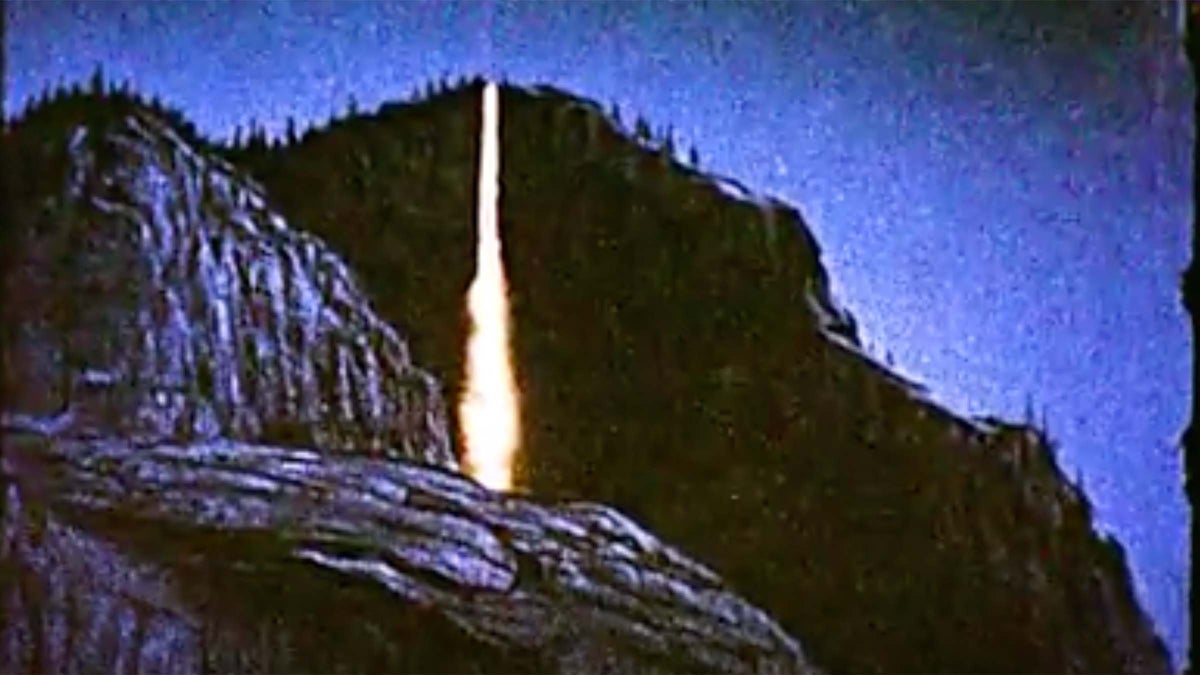Products You May Like
Receive $50 off an eligible $100 purchase at the Outside Shop, where you’ll find gear for all your adventures outdoors.
Sign up for Outside+ today.
Yosemite’s “firefall,” a brief period every year when the late-winter (and sometimes fall) sun backlights the park’s Horsetail Falls causing it to glow bright orange, has grown into a major event. Every year, thousands of tourists come to snap pictures of the magma-like torrent; in 2021, the Covid-era crowds grew so big that the park service required reservations. But a century before visitors learned of the now-famous illusion, they came to see a very different, and much hotter, firefall: A giant bonfire pushed off one of Yosemite’s highest cliffs.
The original firefall began sometime around 1872, years before Congress designated Yosemite as a national park. James McCauley, the owner of the Mountain House hotel on top of Glacier Point, reportedly invented the tradition as part of a Fourth of July show he put on for guests. As Nathan Masters reported on California’s KCET in 2017, McCauley built a bonfire at the edge of the cliff; after nightfall, he would push it over the edge, leading to a torrent of embers and sparks that tumbled some 1,400 feet down to a rocky ledge below. The spectacular became so popular that McCauley began charging $1.50 a head for visitors to watch. The firefalls stopped in 1897, when McCauley lost the hotel; he would later die in 1911 in a horse-drawn carriage accident in Yosemite Valley.
The spectacle returned in the early 20th century when David Curry, the proprietor of Camp Curry, revived it. Under Curry’s direction, the firefall became a bona-fide ritual, with a “fire master” on top of Glacier Point shouting directions back and forth with Curry before pushing a bonfire made of red fir bark (chosen because it created the best embers) off the edge of the cliff at 9 p.m. every night.
While the idea of pushing a blazing fire off of Glacier Point in the drought-stricken west might make modern hikers’ mouths go dry, it was changing philosophies around wilderness, not wildfire hazard, that ended the firefall. In 1968, the then-head of the National Park Service, George Herzog, told Curry’s heirs that he was putting a stop to the event. In a letter that year, he said that the firefall and similar ‘vaudeville’ entertainment at Camp Curry was inappropriate for a national park and proposed expanding the park’s interpretive programming, including ranger-led walks.
On January 25, 1968, the fire fell for the last time; just five years later, photographer Galen Rowell snapped the first-known picture of the natural firefall at Horsetail Falls after encountering it by chance, setting the stage for the rise of the modern Yosemite firefall. (The park estimates that this year’s firefall will begin on February 10. Unlike in 2021, visitors won’t need an advance reservation.)
While the original blazing firefall is long gone, some videos of it remain. Below, watch a recording of one of the later performances from the 1950s.
